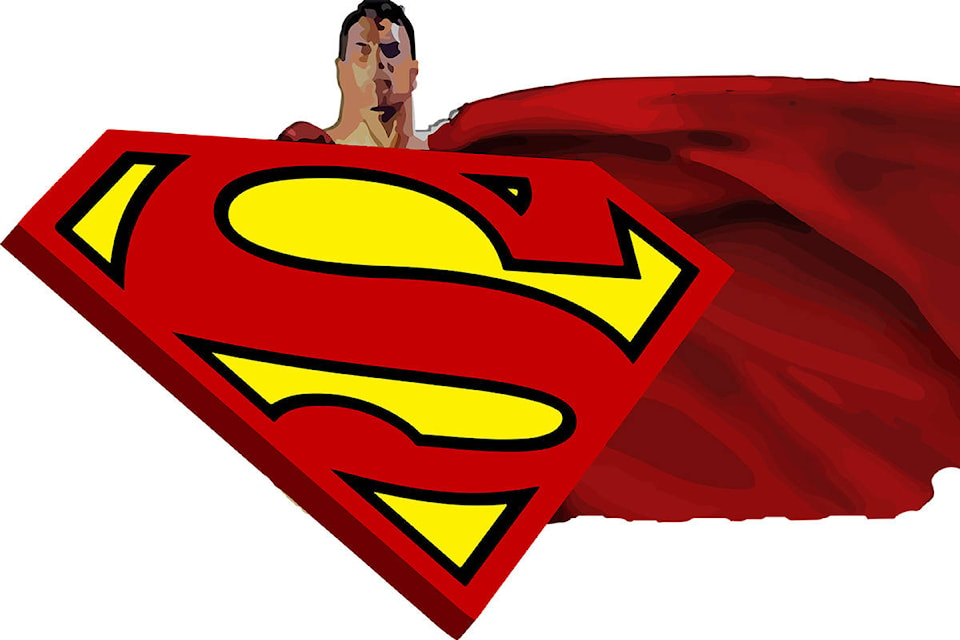The elderly man sits alone at a table near the back of the coffee shop, sipping his coffee as he reads the morning paper.
There’s something familiar about his horn-rimmed glasses, his neatly groomed appearance and his confident poise.
Years ago, the world needed him and he became a hero for his time.
His name is Clark Kent. Many knew him as Superman.
Superman made his first appearance 80 years ago, in the first issue of Action Comics, dated June, 1938.
The debut story, written by American Jerry Siegel and illustrated by Canadian-born Joe Shuster, fills the first 13 pages of the 64-page comic book.
Since that time, Superman appeared in more than 1,000 comic books, a syndicated newspaper comic strip, a radio serial, numerous television series and motion pictures.
When Superman made his first appearance, the Great Depression was in its ninth year and the world was watching the rise of fascism and Naziism in Europe. Many knew a large-scale war was inevitable by this time.
The world needed a hero and Superman — a larger-than-life figure — provided hope and optimism.
This was the first modern superhero. He was invincible. The problems of the world were no match for him.
The first Superman stories had the Man of Steel pitted against thugs, gangsters, mobsters and corrupt schemers.
Superman, wearing his iconic blue tights and red cape, could quickly put the villains in their place. Everything would be fine as long as Superman was on the job.
When he wasn’t Superman, Clark Kent worked as a reporter for the Daily Planet newspaper in Metropolis. The newspaper was inspired by the Toronto Star and Metropolis was based on the city of Toronto.
Eventually the stories had to change.
An unstoppable hero may bring hope to a weary world at first, but such stories quickly become boring. If the hero always wins effortlessly, where is the challenge?
Siegel and Shuster realized this and over time, the villains became tougher, smarter and more menacing.
Kryptonite was later introduced to the Superman stories. This was the one substance capable of stopping the Man of Steel. Kryptonite was first introduced in 1943, in the radio series, The Adventures of Superman. It appeared in the comic books in 1949.
And with that, the stories became compelling. There was now a chance the hero would not always win.
A powerful hero, crafty villains and a destructive secret weapon may have all helped propel Superman to fame, but these elements do not explain his enduring appeal.
Since late in 1940, Superman has lived up to a high moral standard. (Earlier, his moral code was much less defined.)
He believed in personal integrity and was not willing to compromise on that integrity, even when it would be more expedient to do so.
There was never any question in his mind that he would do the right thing.
The world is different today, and some of those who are celebrated as heroes — in fiction or in real life — will compromise on their principles in order to win.
What would Superman say to such people — or to those who support them?
I would like to ask him that question, but Clark Kent has left the coffee shop, and I don’t know where to find him.
The world has changed since 1938.
Is there still the need for a hero like Superman?
John Arendt is the editor of the Summerland Review.
